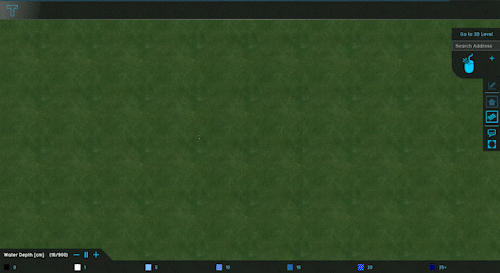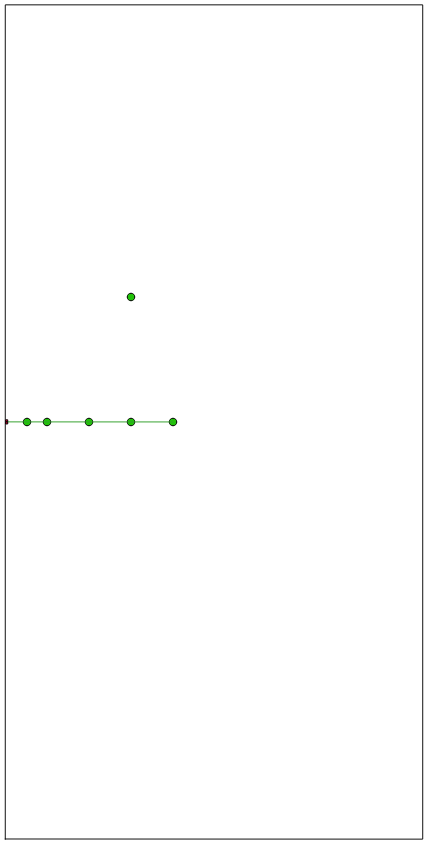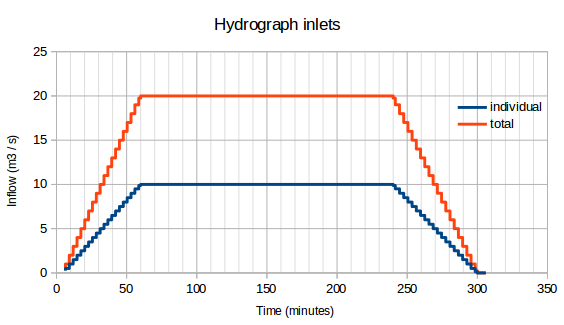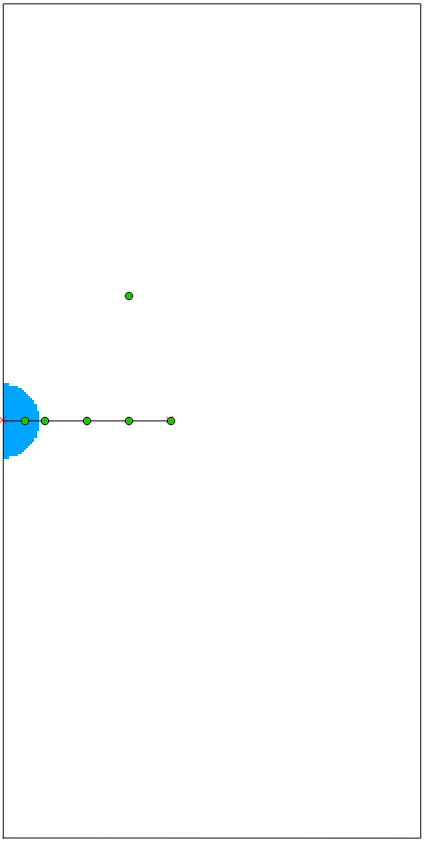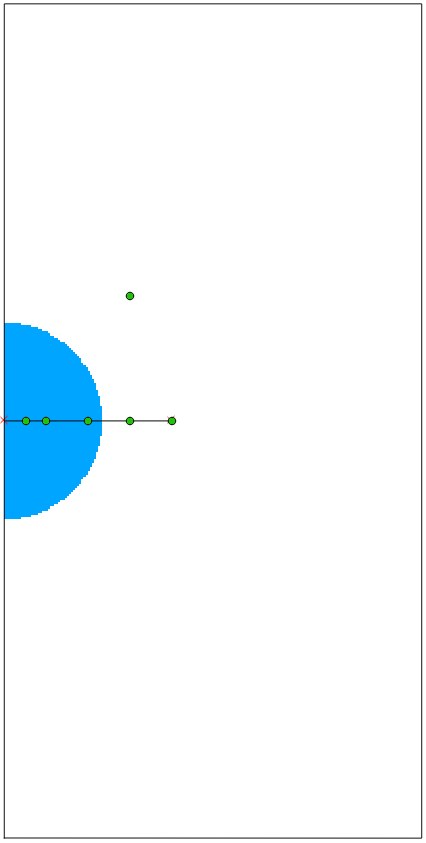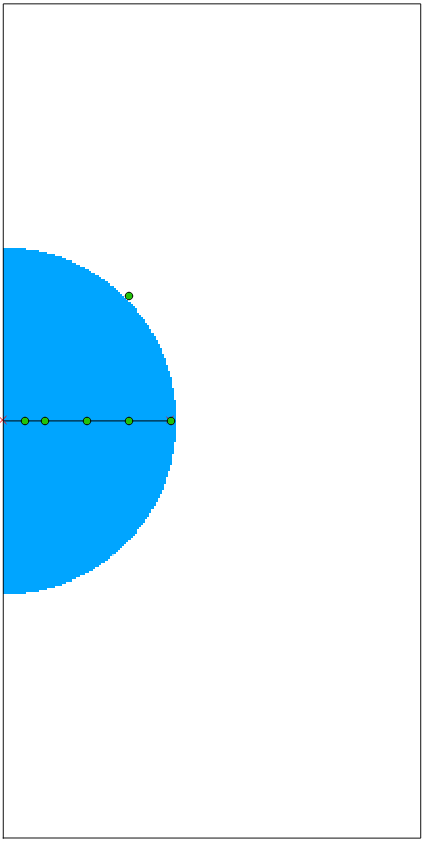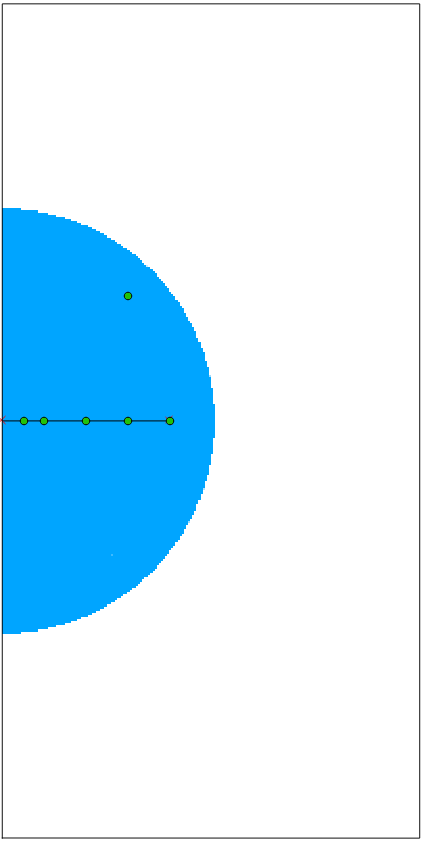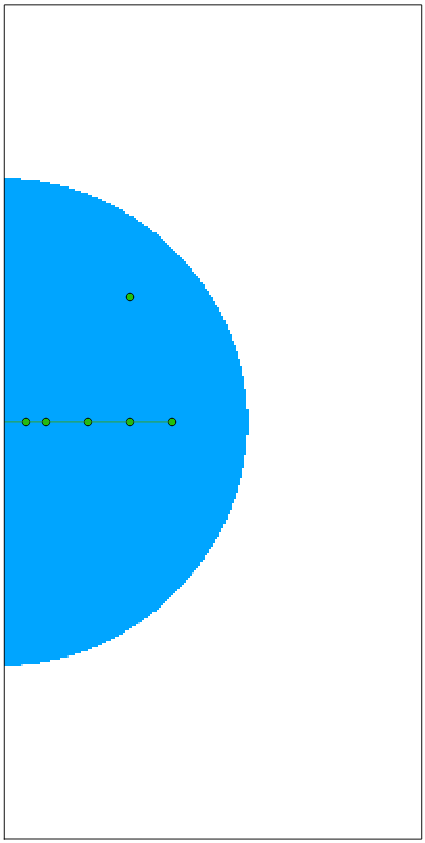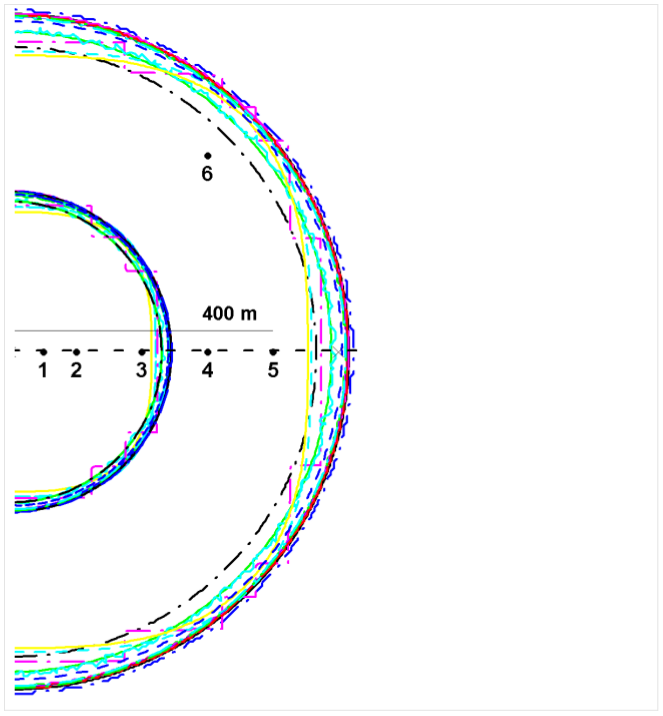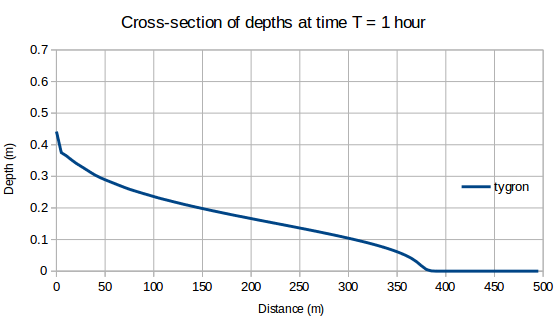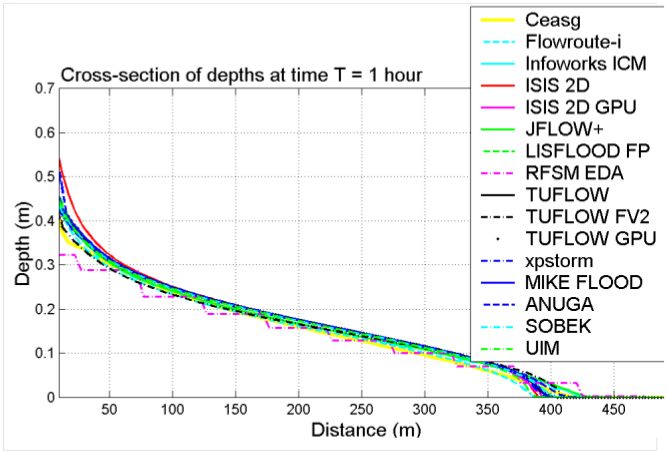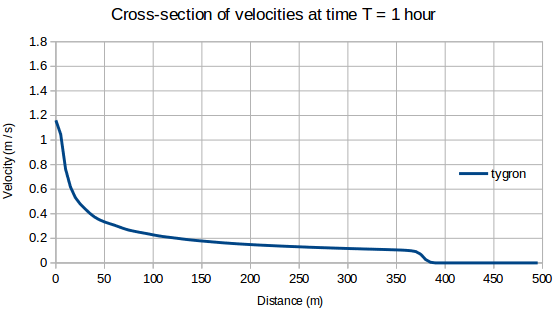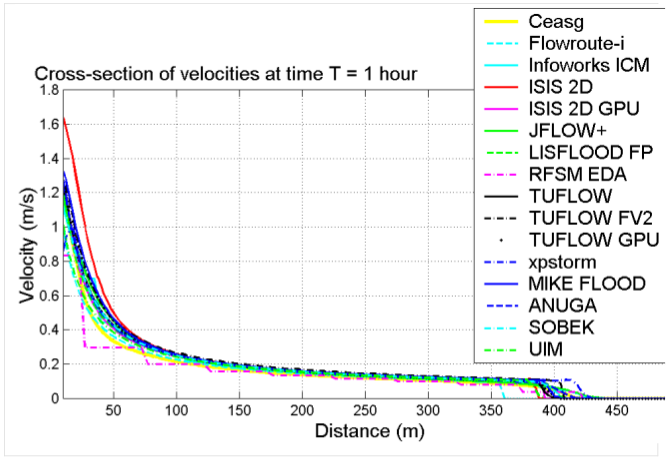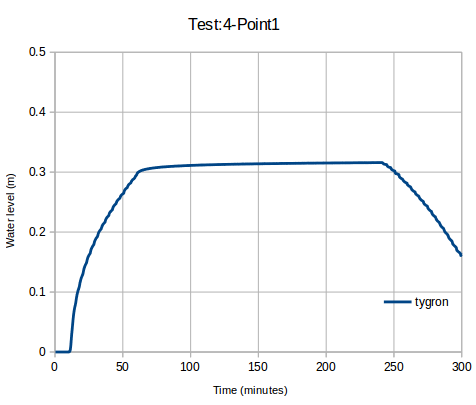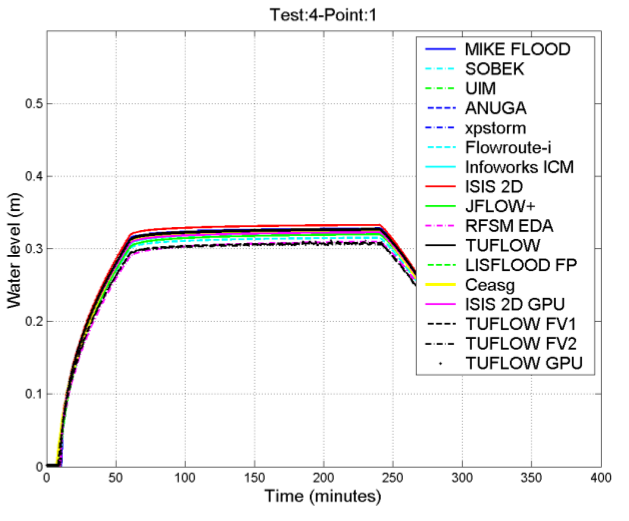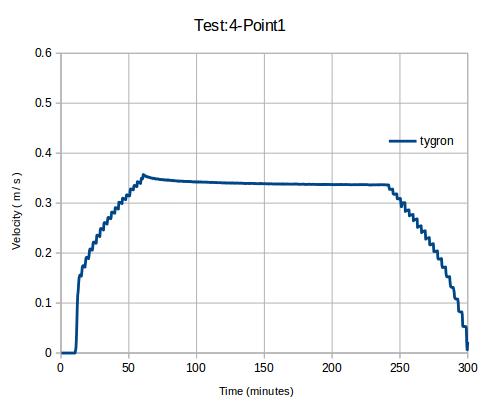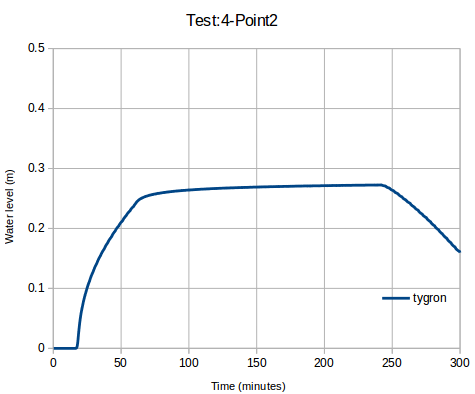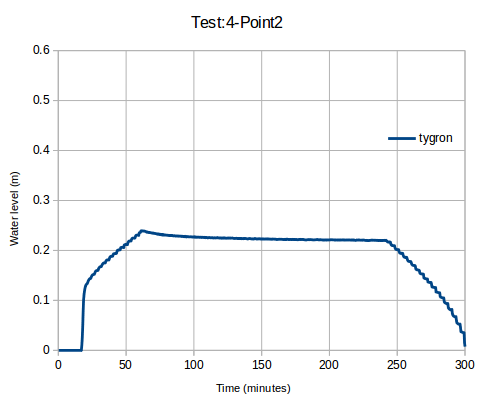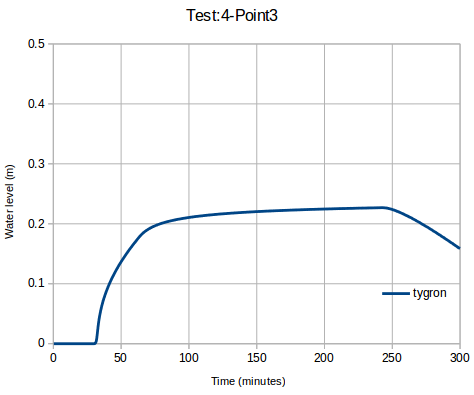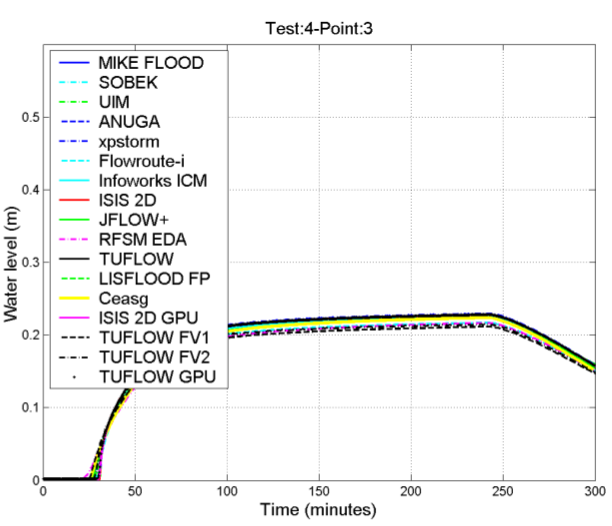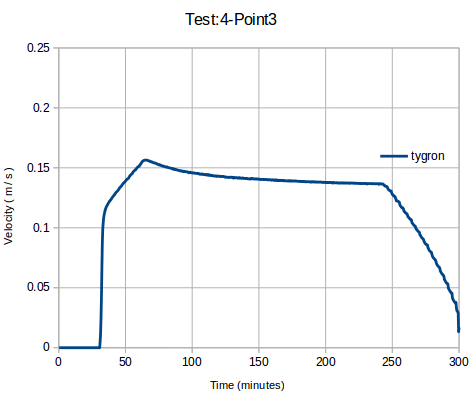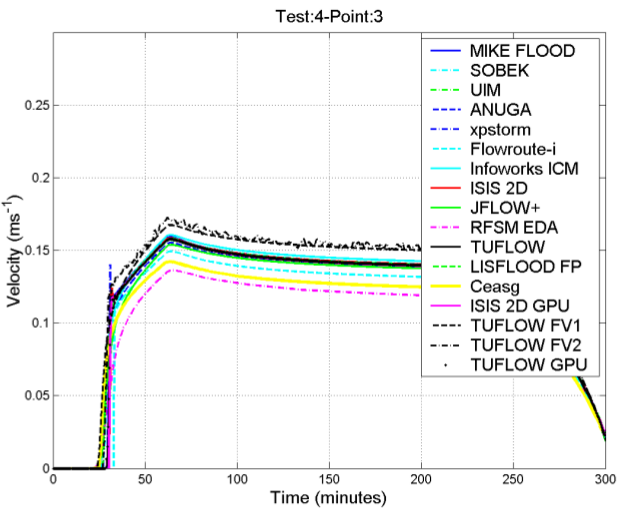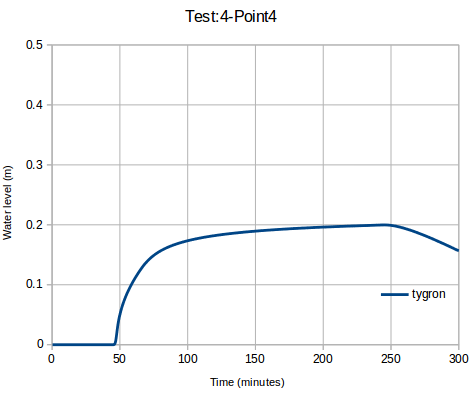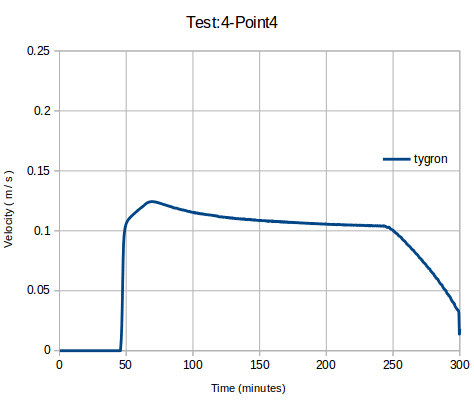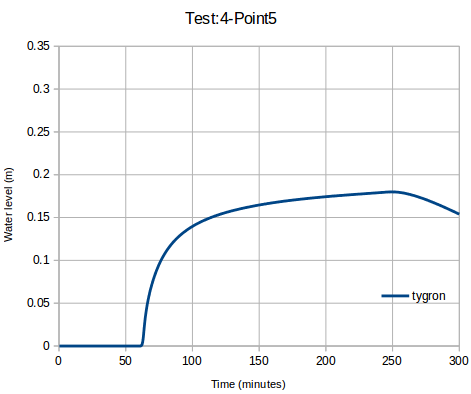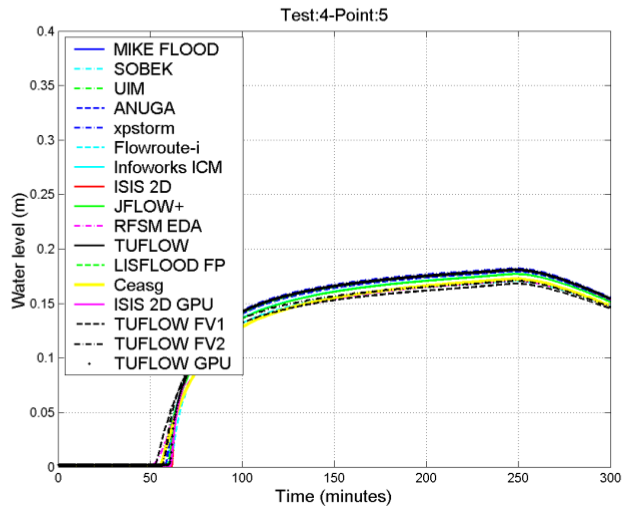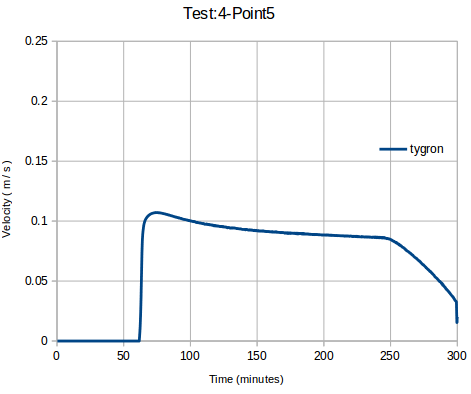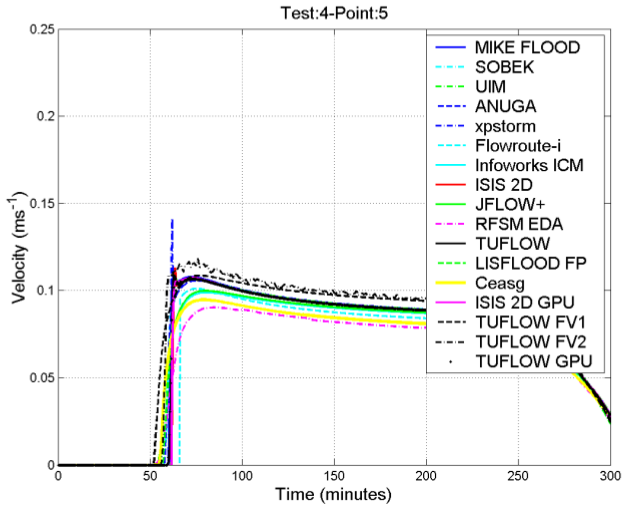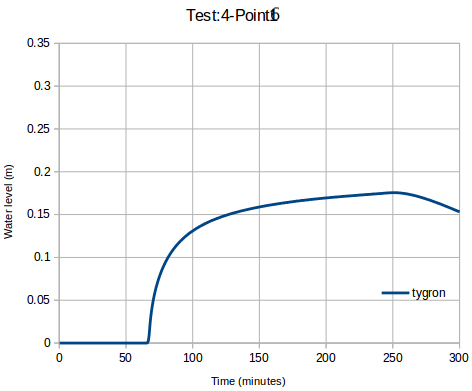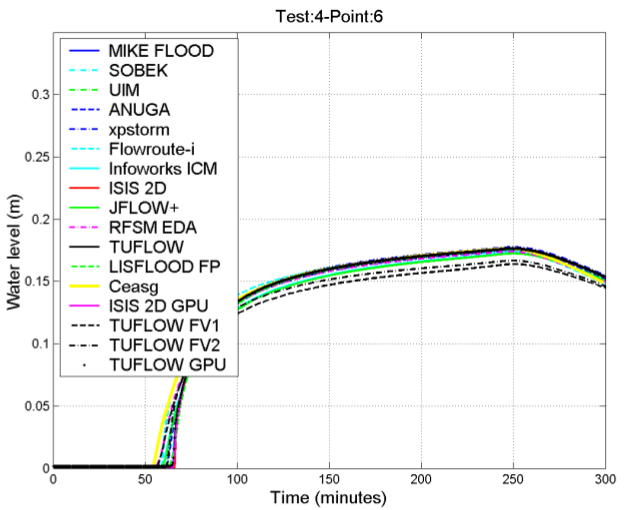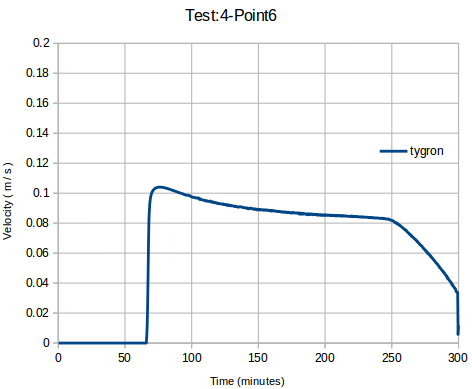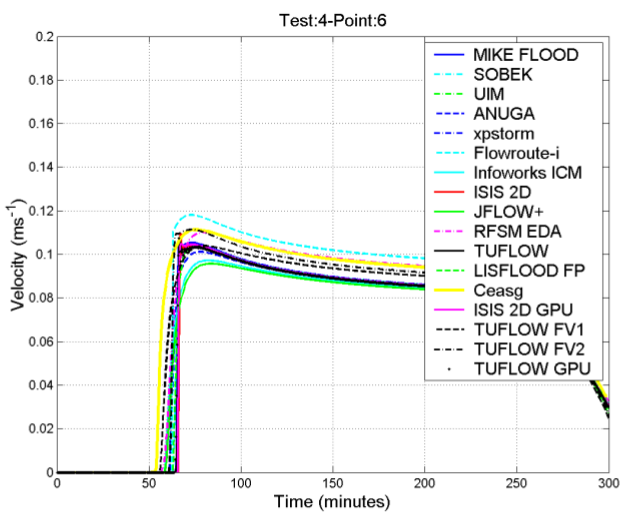UK EA benchmark 4 (Water Module)
This page reports on the performance of the Tygron Platform's Water Module by means of the UK EA Benchmark Test 4 – Speed of flood propagation over an extended floodplain.
The objective of this test is to assess the package’s ability to simulate the celerity of propagation of a flood wave and predict transient velocities and depths at the leading edge of the advancing flood front. It is relevant to fluvial and coastal inundation resulting from breached embankments.[1]
Description
This test is designed to simulate the rate of flood wave propagation over a 1,000 x 2,000 m floodplain following a defence failure (Fig. (a)). The floodplain surface is horizontal, at datum (= 0 m). One inflow boundary condition will be used, simulating the failure of an embankment by breaching or overtopping, with a peak flow of 20 m3/s and time base of ~6 h. The boundary condition is applied along a 20-m line in the middle of the western side of the floodplain.[1]
Boundary and initial condition
- Inflow boundary condition as shown in Fig. (b)
- All other boundaries are closed
- Initial condition: dry bed
Parameter values
- Manning’s n: 0.05 (uniform)
- Model grid resolution (m): 5 (or ~80,000 nodes in the area modelled)
- Simulated time (h): 5
Required output
- Software package used: version and numerical scheme.
- Specification of hardware used to undertake the simulation: processor type and speed, RAM.
- Minimum recommended hardware specification for a simulation of this type.
- Time increment used, grid resolution (or number of nodes in area modelled) and total simulation time to specified time of end.
- Raster grids (or TIN) at the model resolution consisting of:
- Depths at times 30mins, 1 hour, 2 hours 3 hours, 4 hours.
- Velocities (scalar) at times 30mins, 1 hour, 2 hours 3 hours, 4 hours.
- Plots of velocity and water elevation versus time (suggested output frequency 20s) at the six locations represented in Figure (a) and provided as part of dataset.
- These locations are:
| Point ID | X | Y |
|---|---|---|
| 1 | 50 | 1000 |
| 2 | 100 | 1000 |
| 3 | 200 | 1000 |
| 4 | 300 | 1000 |
| 5 | 300 | 1000 |
| 6 | 300 | 1300 |
Dataset content
- Upstream boundary condition table (inflow vs. time). Filename: Test4BC.csv
- Location of output points. Filename: Test4Output.csv
The model geometry is as specified in Section 2. No DEM is provided as the ground elevation is uniformly 0.[1]
Technical setup
The setup in this case is a flat surface. It does not require the import of a dem file, since all height values are set to 0. Other stats:
- The grid cell size: 5 m.
- The area size: 1010x2010, which includes a border of 5 meters and the required domain of 1000m, x 2000m.
- The measurement points have been put on the correct positions, see the image below.
In order to regulate the water level according to the water level graph, we used the following setup: Only two inlets are used. These are put on the cells above and below the center line indicated by the green line. Each inlet had its own grid cell. The inlets were configured as:
- External area (m2): 1 000 000 000;
- Water level (m): 1;
- Threshold (m): none;
- Inlet Q (m):
- Inlet locations:
Results
- Software package used: Tygron Platform
- Numerical scheme: FV (Kurganov, Bollerman, Horvath)*
- Specification of hardware used to undertake the simulation:
- Processor: Intel Xeon @2.10GHz x 8,
- RAM 62.8 GiB,
- GPU: 2x NVidia 1080
- Operating system: Linux 4.13
- Time increment used: adaptive:
- Grid resolution: 5 m.
- Simulation time: 29 seconds for 900 timeframes
- Inlet q M3: 283723.8 m3
- Remaining volume water: 283606.9 m3
Raster grids (or TIN) at the model resolution consisting of waterlevels and velocities
Contours
Cross sections
Plots of velocity and water elevation versus time
Notes
- The steps seen in the velocity profile can be related to the definition of the inlet inflow, which is also in steps.
References
- ↑ 1.0 1.1 1.2 Néelz, S., & Pender, G. (2013). Benchmarking the latest generation of 2D hydraulic modelling packages. Report: SC120002. Environment Agency, Horison House, Deanery Road, Bristol, BS1 9AH. ISBN: 978-1-84911-306-9. Retrieved from: https://www.gov.uk/government/publications/benchmarking-the-latest-generation-of-2d-hydraulicflood-modelling-packages

